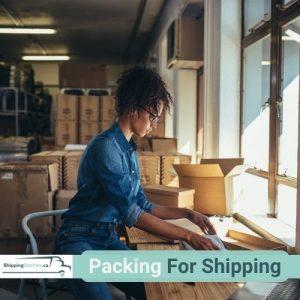Packing for shipping, do you pack for secured shipping?
Packing items for shipping, Is it really a headache?
If you have an e-commerce or a small business, It is likely that after making a sale, you have to packing for shipping to transporting goods from one place to another.
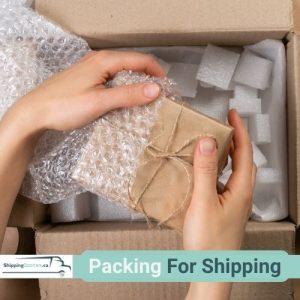
However, packaging and shipping could sometimes be a headache. Not only should you find a good shipping company, but you must factor in how to pack for delivery. For example: if you are going to send fragile, bulky, oddly shaped items or if it contains a liquid that can damage the box, etc., extra care in packing is necessary so that your packages do not get damaged during transit.
We always hope that your products arrive at your customers in optimal condition because ‘your promise is our business‘. Shipping is the final step to getting your goods to your customers’ hands, so please consider the following advice on protecting your shipments.
*If you don’t like reading articles about, simply contact us us for a quick summary and customized services.
Have you experienced problems with the condition of your products at the time of delivery?
Have you shipped products in perfect condition but received them damaged?
Packing for shipping is not difficult! in this article, we will provide some tips about how to pack and ship while minimizing the risk of damages and ultimately saving your money, time, and hassle.
1.- The first thing to take into account for “packing for shipping” is what is the commodity?
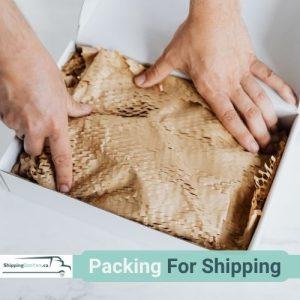
Regardless of what your product is, you must choose the appropriate shipping box and see if it needs to be wrapped with extra material. When using cardboard boxes, watch the texture as most of the boxes deteriorate approximately 60% after the first shipment.
We ultimately suggest using new corrugated, rigid cartons, as it gives your product a higher perceived value in the eyes of your customers and decreases the number of claims.
2.- If you are going to reuse boxes and packing for shipping
Remove old labels, barcodes, stickers, or other descriptions to minimize confusion.
Use only permanent/ waterproof markers, as packaging may get wet during transit. The waybill should always have a waterproof barrier.
3.- It is important
That all the visible spaces in the boxes are filled as cushion to ensure everything is secure. When filling the empty spaces, your goal is to avoid products from movement during the transport. This can limit damage during shipping and handling to both products and the box.
Types of filler materials:
- Plastic bubbles wrap (small bubbles for lightweight items vs. large bubbles for medium weight items)
- Foam balls, foam wrap, foam pellets
- Airbags
- Crumpled paper
- Corrugated inserts
- Shredded cardboard, etc.
Always place products in the centre of the box. When shipping multiple items, ceramics, or glass products in a single package, don´t forget to wrap each item individually and use dividers.
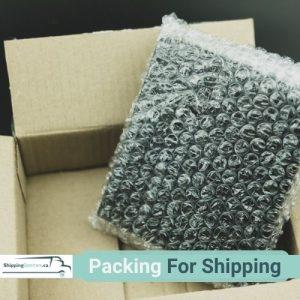
4.- Avoid using Kraft paper tape,
Cellophane tape, masking tape, string, or rope when securing your boxes. It is essential to fasten the items with good packing tape. Do not buy the cheapest tape because you run the risk of it coming off and ultimately causing a disaster.
The packing tape must be of excellent quality for proper packaging. Try to use pressure-sensitive tapes for their strength and durability.
There are some examples of pressure-sensitive tapes:
- Polypropylene tape (brown plastic tape)
- Vinyl adhesive tape (electrical tape)
- Fiber-reinforced paper tape (duct tape)
5.- It is absolutely necessary to alway mention if the shipment contains any liquid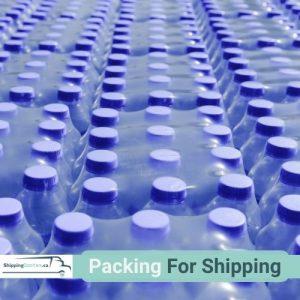
You want to prevent spills and soiling other objects during transit. In addition, a data-sheet must be attached indicating the type of liquid to be transported if it is considered Dangerous Goods (alcohol, gel, chemical products, etc.)
Safeguard liquids in air-tight containers, with strong internal materials such as Styrofoam, double-walled plastic, or rigid fiberboard boxes. Each item should be sealed in an additional plastic bag before putting it into a strong corrugated box. When shipping, calculate risk if boxes tilt as they are not always kept upright during transit.
6.- For multipiece shipments do not join boxes together because
The friction between them can damage the materials or can be separated during transit. It is best to ship boxes separately with clear labels. Do not bind together, and save the hassle!
7.- Do not forget to take notice of the price for the shipping service
As it will be determined by the exact weight of your packaging. If your box is ready to ship, we recommend using a weight scale to estimate the value of the service and so that you do not get any surprises at the time of invoicing.
With these tips about “packing for shipping”, we hope to support your business and make your shipping process better.
Remember that an excellent shipment presentation will project quality, security, and trust to your clients; qualities and attributes will add value to your business, increase your sales, reduce claims, and make your life easier.
-
Remember, our team at ShippingQuotes.ca will be glad to assist you 24/7 to answer all your shipping inquiries.
-
For a free quote, do not forget to visit our website https://ShippingQuotes.ca, or simply email admin@shippingquotes.ca.
-
For more tips follow us on Instagram https://www.instagram.com/shippingquotes_ca/

